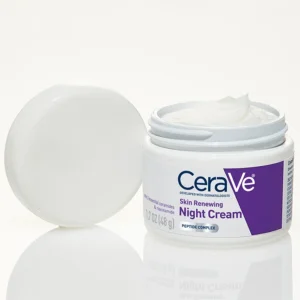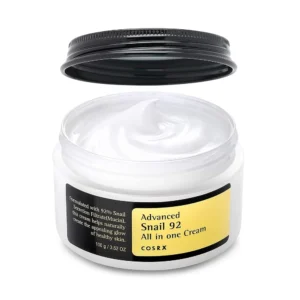White nail spots typically are nothing to worry about; they often result from minor injuries like jamming a finger or biting them, or can be an indication of certain health conditions and medications like chemotherapy drugs and sulfonamides.
White spots may be an early indicator of more serious conditions, such as diabetes or liver cirrhosis. When this is the case, a healthcare provider needs to assess and treat accordingly.
Table of Contents
1. Allergic Reaction can cause White Nail Spots
White spots on nails, known as leukonychia, often occur as the result of injury to the nail bed. Common causes may include biting or picking at your nails, hitting them against hard surfaces such as concrete surfaces or getting manicures and pedicures that damage them; air becoming trapped between layers of keratin in these instances leading to chalky or white looking spots on them.
White nail spots can be an indicator of exposure to toxic heavy metals such as arsenic and strontium, while certain medications can contribute to spottification by slowing nail growth or leading to nail brittleness, leading to transverse leukonychia (white lines that run across nails), also known as transverse leukonychia or Mees’ lines – after the physician who first described them.
Nutritional deficiencies can also cause white spots on nails. While rare, nutritional deficiencies are sometimes symptomatic of systemic diseases like diabetes, liver cirrhosis, or psoriasis. A lack of iron or zinc in one’s diet may also cause these white spots.
2. Injury can lead to White Nail Spots
If white spots appear without other symptoms, they’re likely the result of damage to the nail matrix or base of a fingernail. This could come from biting your nails, jamming fingers together or chemical effects from nail polishes or acrylics used on the fingers – these causes shouldn’t be dangerous and will generally fade as your nail grows out.
Injury to nails may result in milk spots, small white areas that form at the base of each nail and eventually grow out along with it. If they appear frequently or seem unusually dark-colored, this may indicate infection or another health issue and it is recommended to visit your physician immediately.
Rarely, white spots on nails may indicate systemic disease such as liver cirrhosis or diabetes; however, the symptoms would usually be much more obvious if this were true. White spots on nails may also result from taking certain medications like chemotherapy drugs and sulfa antibiotics used to treat bacterial infections – this condition is known as leukonychia and treatment is often necessary from a healthcare professional.
3. Fungal Infection
Fungus that naturally inhabits your body, such as yeast, can spread uncontrollably if damaged skin or nails become broken or irritated. They can even invade lungs, liver and eyes through systemic fungal infections – often happening among those suffering from HIV, diabetes or hepatitis.
Fungus most often affects toenails but can also impact fingernails. It most frequently affects big toe nails, where white spots known as white superficial onychomycosis serve as the first visible indication of infection. White nail spots may follow by thickened nails with yellow or brown bases known as lunulae that give away their presence.
Avoid nail fungus infections by thoroughly drying your hands after every wash and avoiding public spaces such as showers, locker rooms and pools that use shared public tools like shower heads or locker rooms, among others. A reputable nail salon that uses disposable tools may also reduce the likelihood of nail fungi infection; in case white spots persist consult your healthcare provider; they may order blood tests, potassium hydroxide preparation or nail clippings to ascertain why there may be an infection present.
4. Medications for White Nail Spots
Though white spots on nails might seem harmless at first, if they persist or accompany other symptoms it’s important to seek medical advice immediately. Naturopaths at Your Doctors Online note that persistent white spots could be an indicator of diabetes, heart disease, liver failure and autoimmune diseases as well as specific medications like sulfa drugs used for bacterial infections and urinary tract infections – they could even indicate leukonychia which could prove fatal in extreme cases.
White spots on nails caused by injury such as nail biting or picking typically do not need medical treatment, but if their nails become brittle, discolored, or have grooves and ridges it’s wise to consult your healthcare provider immediately.
If injury to the nail matrix is responsible, a treatment plan might include home care or over-the-counter medications, while doctors might also recommend topical or oral treatments to address any underlying medical conditions, such as systemic illness like diabetes or heavy metal poisoning such as arsenic and lead exposure.
5. Diet
White spots on nails may be an indicator of more serious health conditions such as liver disease. White spots could cause by injuries, poisoning or vitamin deficiencies – all potential sources. In rare instances they could even indicate something more sinister such as liver cancer.
White nail spots are most frequently caused by fungal infections; however, they could also be the result of injury or an allergic reaction to nail polish or hardeners. Furthermore, white nail spots could indicate serious health conditions like liver disease, cardiovascular issues or diabetes.
White spots on nails come in various forms, ranging from tiny dots to full-on white nail stripes. One common form is known as leukonychia – usually painless bumps beneath fingernail tips that form under fingernails.
If you notice white nail spots on your nails, it is wise to visit a healthcare provider immediately. They will be able to ascertain the source of these symptoms and recommend treatment accordingly.
6. Dehydration
Nails can provide an invaluable indicator of overall health; they can reveal vitamin deficiencies, autoimmune conditions and fungal infections that might otherwise go undetected.
Leukonychia (white spots on nails) is an indicator of physical trauma to the nail, often from hitting it by accident or caught in an opening door, leading to layers of keratin cracking beneath it and trapping air under it, making the nail appear white. Biting your nails, applying fake ones or using an improperly sterilized remover are other possible sources of nail trauma.
White spots on nails don’t necessarily indicate serious health conditions; if they occur alongside pain, redness, or swelling it would be wise to visit a healthcare professional for assessment; otherwise minor white spots should clear up on their own without additional treatment.
7. Genetics
White spots on nails could be due to genetic conditions. Bart-Pumphrey Syndrome or Darier disease are hereditary disorders which cause nails to appear completely white at birth or early childhood, while injuries to the nail matrix, where nails formed, can also result in white spots; this injury is known as true leukonychia and typically manifests itself at the base of fingernails where they meet skin.
If a single white spot appears in one nail, it likely caused by injury and shouldn’t cause alarm. But if multiple white spots appear across multiple nails, this could indicate diabetes, liver, or kidney disease as a potential issue.
Doctors can typically identify the source of white nail spots by inspecting each nail closely and inquiring about recent injuries or health conditions that could be contributing. They may even order blood work to test for vitamin deficiency or any other issues that might cause these white spots on nails, in order to provide treatment and reduce their appearance.







